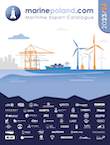
Since the early days of ballast water treatment, two treatment methods have been at the forefront: UV and electrochlorination (EC). For many years, UV systems were considered simpler and better for smaller ballast water flows, while electrochlorination systems were thought to be more practical for larger flows. As the two technologies have evolved, however, perceptions are changing.
“UV treatment has always had the advantage of being chemical-free, which means less risk for the vessel and its crew,” says Anders Lindmark, Head of Alfa Laval PureBallast. “In the past, electrochlorination had clearer benefits in terms of footprint and power consumption. But modern UV systems like Alfa Laval PureBallast 3 compete easily on those parameters – which is why more vessels with large flows are turning to them.”
A new white paper explores the issues
A recently published white paper, “Comparing UV and electrochlorination: achieving peace of mind and economy in ballast water treatment”, examines the current state of these two technologies. It explores their deep implications in terms of peace of mind, but it also examines the many issues that influence costs.
“System cost and footprint have a clear impact up front, just as consumable costs do in the long run,” says Lindmark. “But the new white paper highlights the hidden costs as well, so that customers can get a true picture of their investment and the long-term OPEX.
Follow the link below to download the white paper and gain a better understanding of your choices.


